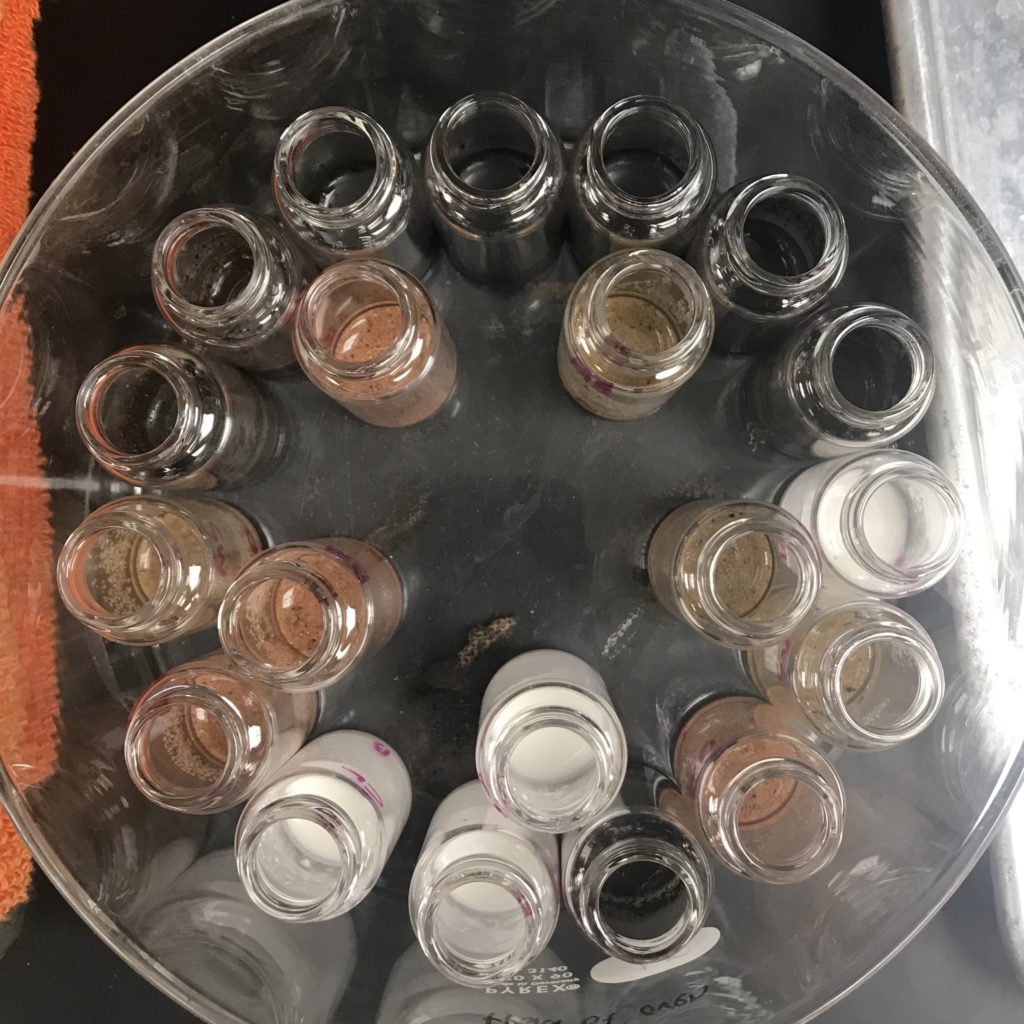Evaluating Fluorine Levels in Soils using PIGE

Soil–a complex mixture of inorganic and organic substances–may vary in composition between different locations. Hence, PIGE, the primary method the Peaslee Group uses for fluorine screening, runs into two issues with soils.
I
Among soil’s primary inorganic minerals, biotite and muscovite, fluorine may be present. In lower quantities, fluorapatite, topaz, and fluorite introduce fluorine to some soils. Since the focus behind the PIGE fluorine screening process is to evaluate samples for the possibility of containing organic sources of fluorine (PFAS), the natural fluorine present in soil is an interference. Since the concentrations of these minerals may greatly vary between soils, there is no simple correction. Thus, we are developing a method to differentiate inorganic sources of fluorine from organic sources.
II
Our PIGE method is based on external standards. Due to major variations in soil composition (consider sand and clay), the stopping power varies—potentially leading to inconsistent results between different types of soils. We are currently evaluating the degree to which differences in sample composition affect results. Depending on the results of the tests, we intend to develop a correction.